
2016 was the year that Andrew Garfield became the face of religious suffering.
He’s good at it, too — so good that in theaters right now, there is not one, but two movies in which he stars as a devout man who gets persecuted for his beliefs. Both, in a weird coincidence, also involve Garfield traveling to Japan: during World War II in Hacksaw Ridge, in which he plays a conscientious objector who nevertheless enlists to do his part, and during the 17th century in Silence, in which he plays a Portuguese Jesuit priest engaging in forbidden missionary work.
The key to these dual roles isn't a shared personal faith (Garfield is "not a Christian person"). It might actually have more to do with Garfield’s long, Adam’s apple–forward neck (which has its own Facebook fan page) — or at least in the boyishness it helps the 33-year-old retain, a body part he looks like he isn’t quite finished growing into. It’s that air of hovering between youth and adulthood that gives Garfield's portrayals of Christian devotion such an aura of callow sincerity. His characters' faith is new-coat-of-paint fresh, gleaming with the abundant confidence of the untested. He convinces you that these young men are willing to give everything for their beliefs, but also that they have no idea what that might entail. They have the fervor of righteous undergraduates yet to get kicked around by the outside world. There's a level of suspense to their convictions.
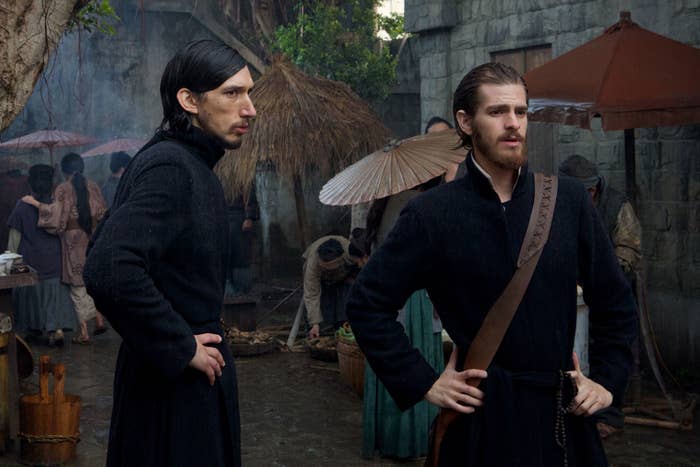
Silence and Hacksaw Ridge lean heavily into Garfield’s reedy look. In the former, he is Sebastião Rodrigues, who arrives buttoned into a cassock like a gangly schoolkid in uniform with his partner Francisco Garupe (Adam Driver), the two eager to head into danger by traveling to a what's now a Christian-hostile country to look for their missing mentor, Father Cristóvão Ferreira (Liam Neeson). In Hacksaw Ridge, Garfield is Desmond Doss, who upon enlisting is greeted by a sergeant telling him he’s “seen stalks of corn with better physiques,” and who’s eventually saddled with a helmet that makes him look like Fievel Mousekewitz in An American Tale, cartoon-cute features framed by oversized headgear. Whatever strengths his characters have, these choices assure, they’re not broadcast physically. They’re spiritual.
Silence and Hacksaw Ridge aren’t faith-based films — not in terms of the bustling industry that the term has come to connote. Faith-based movies are a whole parallel filmgoing universe created specifically to appeal to Christian audiences who feel underserved or slighted by the bulk of studio releases. It’s one in which features like God’s Not Dead and War Room have made serious bank without registering on wider radars, marketed to churches and, often, affirming conservative values alongside religious ones. No, Silence and Hacksaw Ridge are something rarer in modern Hollywood — they’re mainstream movies that are centrally and unabashedly about faith, meant to seen by wide audiences and meant to be taken very seriously as cinema.
Their weightiness is reinforced by the fact that they both represent milestones for big-name directors known for exploring masculine mythologizing. Silence, based on a 1966 novel by Japanese Catholic author Shūsaku Endō, is a project Martin Scorsese has been trying to get made for over two decades — since the wake of The Last Temptation of Christ, a film that prompted protests and boycotts by Christian groups as well as an arson attack. (Times have changed — in November 2016, Scorsese met with Pope Francis.) Hacksaw Ridge is an attempted comeback vehicle for Mel Gibson, who’s apparently waited out his radioactivity managing to creep back into respectability after anti-Semitic and racist outbursts and domestic violence charges. They’re awards contenders: The populist war movie Hacksaw Ridge snagged a few Golden Globes nominations while the austere art drama Silence has gotten critics-group nods.
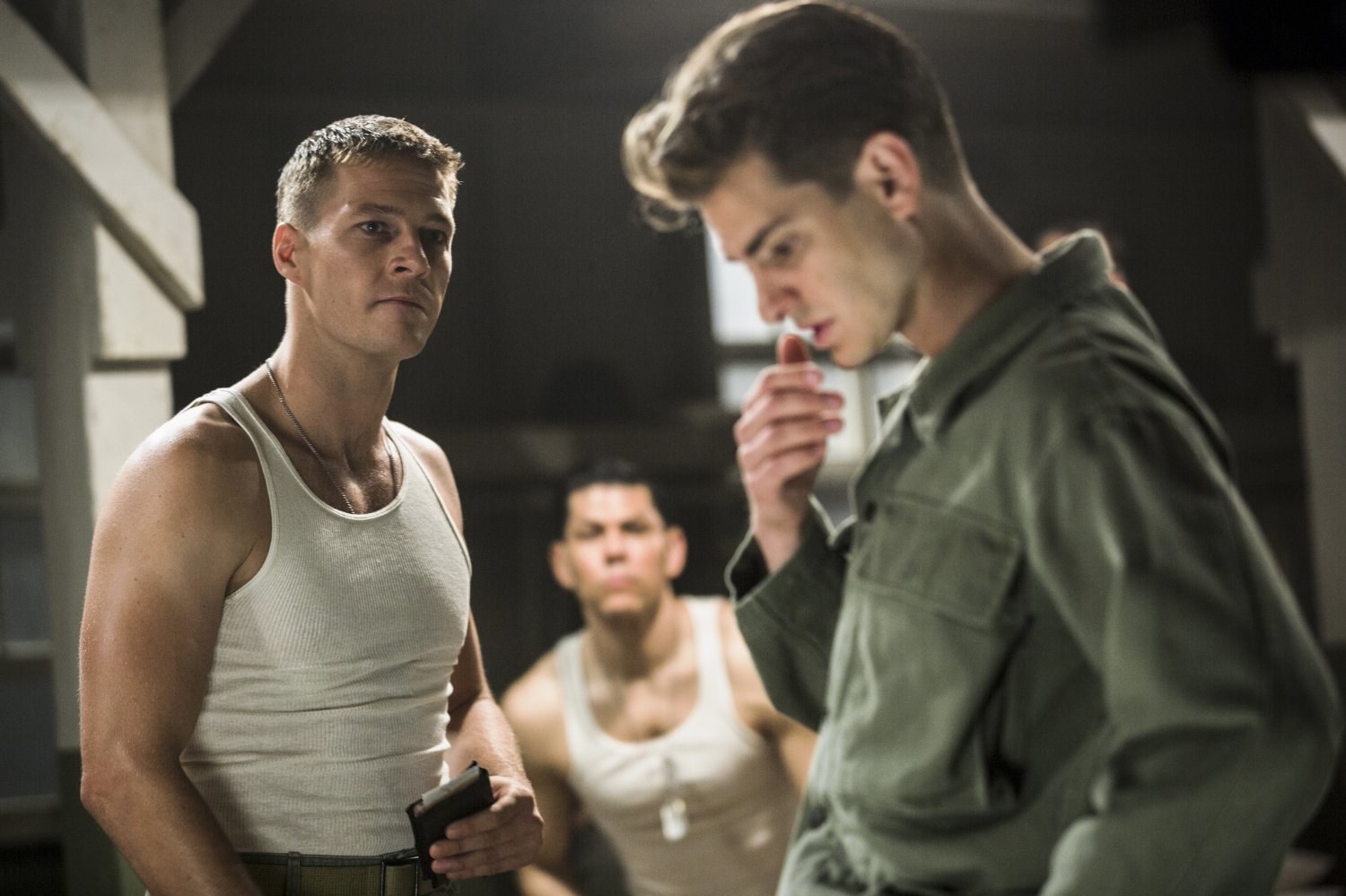
They also, in this era of Trump, come across as a bifurcated look at Christianity too perfect to have been planned. They demand to be considered in parallel, not just because of the star they have in common, but because of their shared themes and diverging visions on what it means to hold fast to your beliefs when they’re challenged. In Silence, the greatest moment of divine connection comes when Rodrigues is forced to compromise his religious standing on behalf of others. In Hacksaw Ridge, Doss is valorized for refusing to bend in his convictions, no matter how unsafe they initially make his fellow soldiers feel. Silence and Hacksaw Ridge are an unintentional double feature about whether it’s more important to pursue Christian values or preserve a Christian identity.
In Silence, a Christian identity is not to be proclaimed lightly, not when it will mark you for pain or death. The film’s title refers to the silence of God in the face of human questioning and suffering, and oh, is there plenty of both over the 161-minute runtime of Scorsese’s film. It takes place in a Japan where Christianity has been banned for two decades, converts tracked down and tormented until they either apostatize — as Ferreira is rumored to have done after being tortured by Inquisitor Inoue (Issey Ogata) — or are executed. Rodrigues and Garupe know they might die as a result of their journey to tend to the remaining Japanese Christians they can find while trying to discover what became of Ferreira. It’s an idea they seem to find appealing, or at least the colleagues that came before them did. “They asked to be tortured, so they could demonstrate the strength of their faith and the presence of God within them,” Ferreira intones in the movie’s opening sequence.
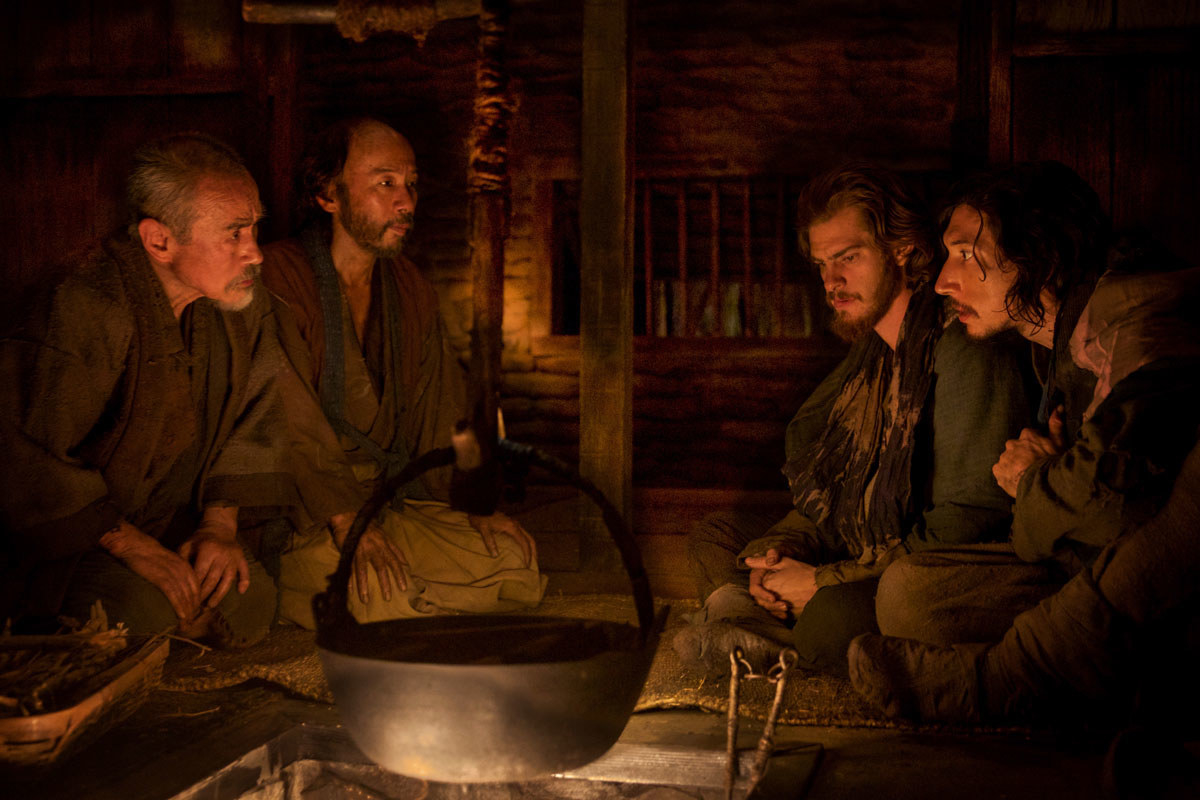
But Rodrigues, who eventually splits from Garupe to cover more ground, finds the abstract appeal of martyrdom compromised by complicated details on the ground. His intentions may be pure, but he and his flock (including a timorous guide named Kichijiro, played with a fascinating mix of wiliness and gutlessness by Yosuke Kubozuka) are also pawns in a game of international economics. The secular agenda — Portugal's attempts to beat out the Dutch and other Western powers courting Japan for trade purposes — is one the film is quicker to acknowledge than its starry-eyed protagonist, who’d prefer to think in terms of souls to be saved despite all inconvenient questions about cultural imperialism and language barriers and whether the concepts of Catholicism are even being properly understood.
Darker still is the fact that everyone Rodrigues ministers to or is helped by ends up in danger. His is a white savior story turned inside out — he and his colleagues spread a faith that directly results in new believers being oppressed. Rodrigues at first looks at the difficult lives of the secret faithful who take him in, led by villagers like Ichizo (Yoshi Oida) and Mokichi (filmmaker Shinya Tsukamoto), with a combination of pity and admiration, impressed by their devotion, taking their confessions and holding mass at night while hiding in the day. And then they get killed, horribly. He’s made to witness, multiple times, people being hauled off, hurt, or executed after refusing to step or spit on a fumi-e, an image or Christ or the Virgin Mary used to test suspected Christians. His very presence puts them in danger.
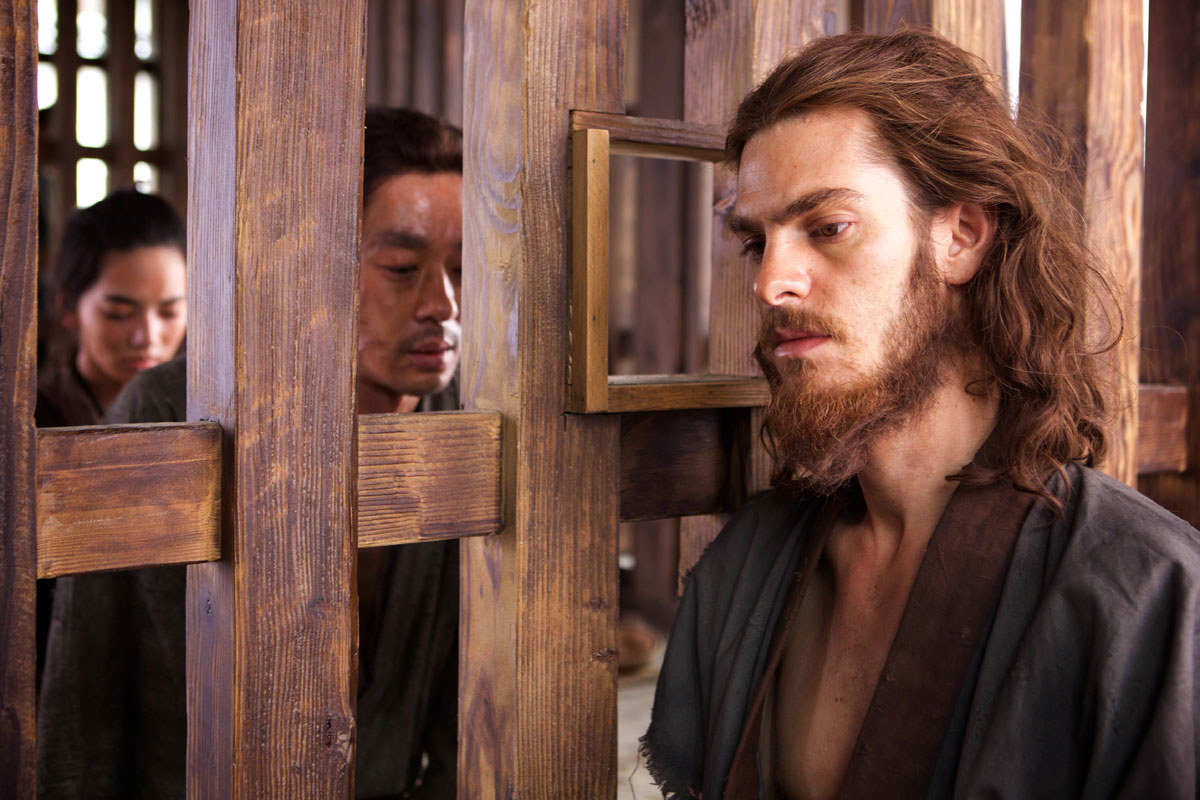
Rodrigues is ready for his own martyrdom, maybe even welcomes it as a chance to prove his piety. But that’s not the option he’s given — instead, he’s asked for another kind of self-sacrifice. In the final third of Silence, when Rodrigues is himself imprisoned by the inquisitor, he’s faced with the test of whether he’d be willing to allow others to die so that he can continue to proclaim his steadfastness in his faith, or whether he would renounce his religious identity in order to save lives. He has to decide whether blasphemy can be righteous when it’s in service of others, whether it’s more difficult to surrender your life in a way that doesn’t entail bleeding out over one of the inquisitor’s pits. Silence asks if the greater act of faith is to stand by your beliefs no matter the cost, or to compromise them on behalf of the welfare of others — and whether a public renunciation can really mean anything to a personal relationship with God. In those scenes, Garfield’s physical vulnerability and emotional transparency become difficult to watch. He’s raw with agony as his character is forced to reconcile unimpeachable tenets with impossible choices, pain all but welling out of his pores.
But it’s for Hacksaw Ridge that Garfield’s been getting plaudits. There’s more than a red/blue divide at work there, though that can’t be written off. Silence was a longtime passion project for Scorsese, and yet in its final product, it doesn’t feel like that, like a work of passion. It’s exquisitely framed and tonally ponderous, stiff and studied, distant from the strong emotions it depicts but can’t itself embody. Hacksaw Ridge, on the other hand, goes down easy. It's brash and brawny and unconcerned about being a hilariously gory movie about a pacifist. As Doss, a real Blue Ridge Mountains man who received the Medal of Honor and who died in 2006, Garfield’s embodiment of religious conviction is expressed not through theological dilemmas but through the multiple Christ-like poses in which he ends up. Subtle, Gibson is not.
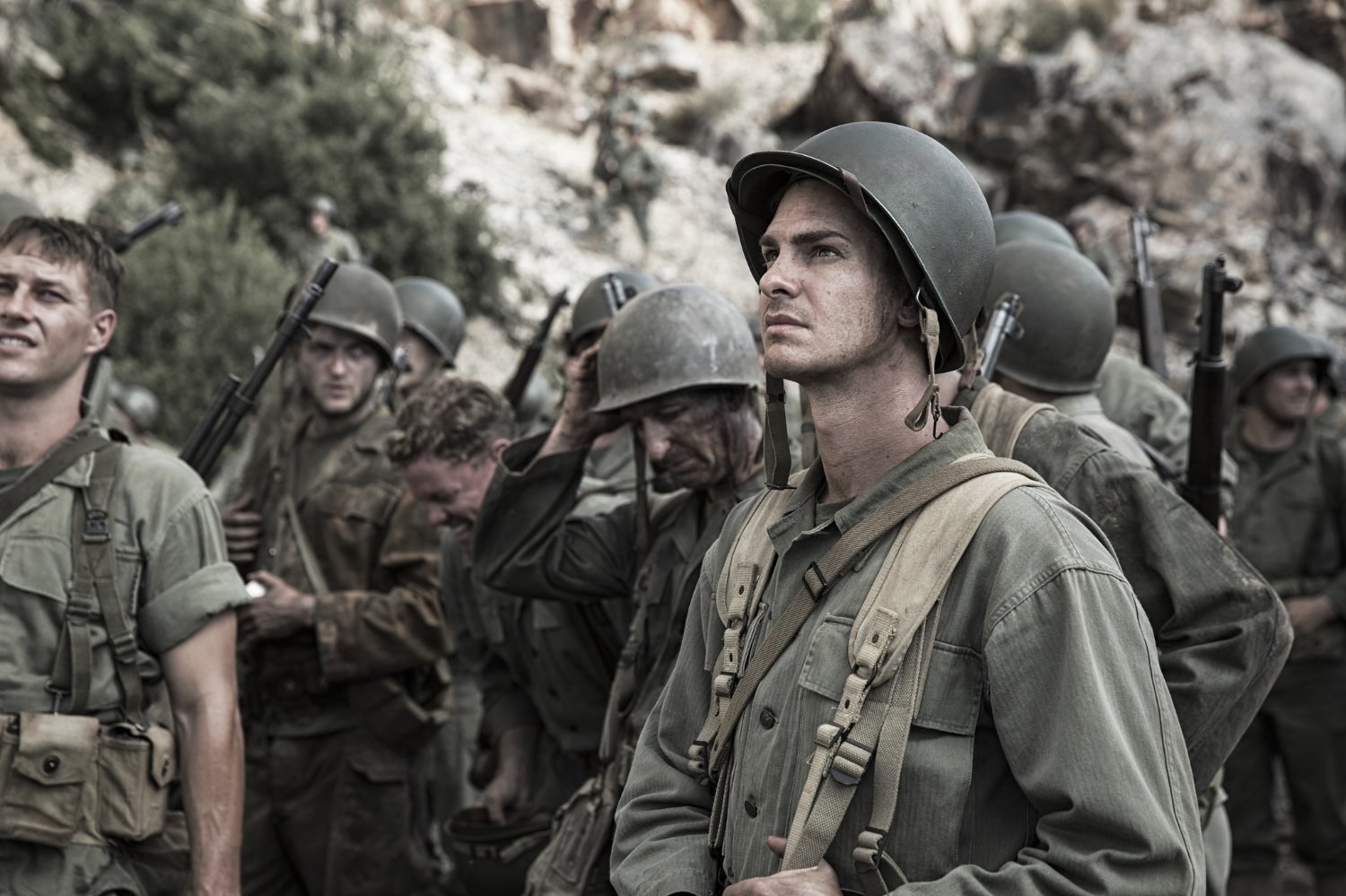
And somehow (and this feels like it should be whispered), Hacksaw Ridge is the more effective movie — and certainly the one that seems to better speak to our cultural moment, great schlock where Silence is stilted art. For all his personal dumpster-fire qualities, Gibson, behind the camera, has a gift with swooping showmanship that’s equalled by few other working directors (a group of people he couldn’t have counted himself among for the past, blacklisted decade). He understands, in particular, the visceral power of violence as spectacle. He understands the pull it has on an audience, and that viewers don’t actually need the stuff of a movie to match the morals it's espousing if they’re assured of them in the end. Faith-based films may tend toward the treacly and family-friendly, but at the top of the Christian-themed box office chart is Gibson’s R-rated The Passion of the Christ, a mesmerizing, disturbing Jesus snuff film in Aramaic that made over $80 million by following none of the same rules.
Hacksaw Ridge has no issues subjecting Doss, a Seventh-say Adventist who won’t even touch a weapon, to a whole world of exciting violence while at the same time lauding his refusal to participate in it. But first he has to earn his right to go to war, enduring hazing and abuse when he enlists under conscientious objector status. He’s determined to do his part by serving as a combat medic, but that requires going through basic training, where his refusal to pick up a gun initially alienates him from the men he’ll eventually serve with (played by Vince Vaughn, Sam Worthington, Luke Bracey, Luke Pegler, Richard Pyros, and more). He earns their respect with his hard work, his determination, his willingness to go to jail for insubordination rather than compromise on his beliefs, and his refusal to rat out the guys who beat the shit out of him, at which point it’s off to the Battle of Okinawa.
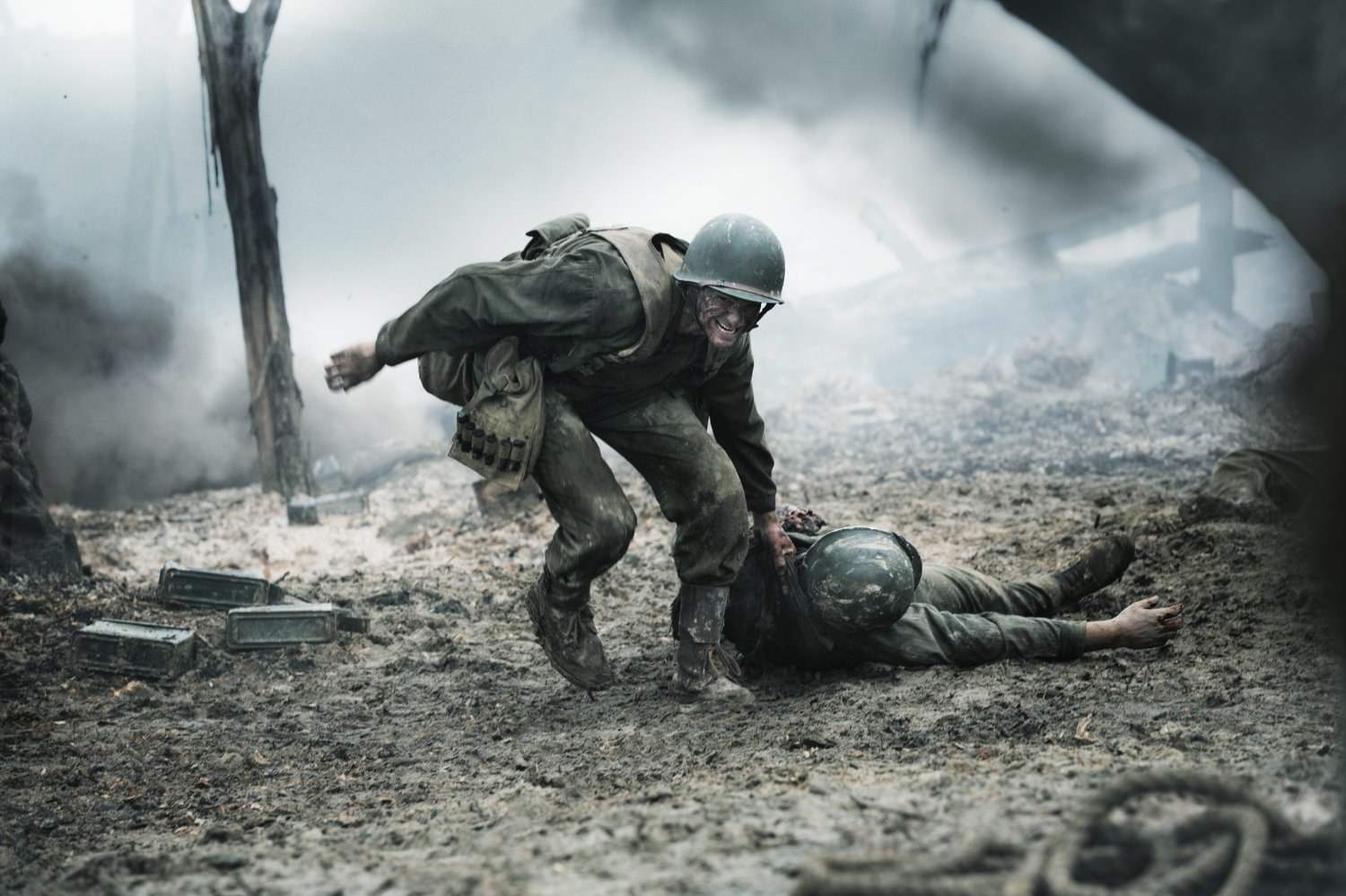
When Hacksaw Ridge evolves into one massive, rapturous war sequence of Doss dodging artillery fire to get to his wounded comrades, it achieves an uncanny level of self-contradiction that’s thrilling. Doss — a lanky vegetarian pacifist — risks his life again and again over a day and a night during which the rest of the troops have retreated, rescuing and treating injured men, among them some of the Japanese soldiers the Americans have been fighting. For Doss, all life is worth saving, though the movie makes clear none of the enemy combatants he lowered down made it to medical care (wink wink!). The Japanese are, anyway, just an indistinguishable nightmare hoard, save for the man Doss is glimpsed bandaging up and the officer shown, in loving detail, committing seppuku.
Of course Gibson finds time for that sequence. Doss may not believe in violence, but Gibson adores it — the carnage in the second half of Hacksaw Ridge is operatic and ecstatic, mangled bodies littering the ground, limbs ending in ribbons of flesh, rats eating corpses, and maggots writhing on dead faces. Characters wield machine guns and flamethrowers with great enthusiasm and, in an admittedly kick-ass move befitting a way sillier action flick, save themselves from a live grenade by hurling the body of a just-killed Japanese soldier on top of it. Doss’s humble, miraculous heroics, Garfield’s earnest face swimming in that oversize helmet, are given due salute, but the film has no interest in the kind of world Doss might desire, in which war wouldn’t exist. Hacksaw Ridge ultimately prioritizes the cinematic appeal of adrenaline-fueled trampling of enemies, in victory with the taste of blood in the mouth.
Hacksaw Ridge should feel like a mockery of what Doss stood for, but instead it feels profoundly revealing about a particular truth of our moment, which is that a cultural connection can easily win out over shared moral values. Silence is a movie about a priest who finds the idea of dying for his faith an easier decision to make than living for it, when living means letting go of his identity as a priest, a Catholic, and a European. It is, ultimately, a movie about how letting go of the firm boundaries of that identity is the more holy act than insisting on maintaining it, whatever it costs other people, whereas Hacksaw Ridge is about the courage of Doss’s refusal to yield, how it's ultimately better for everyone. It’s that fortitude that Gibson finds admirable — the idea of the world bending around faith, so that at the end, for a moment, the war is put on pause so that Doss can pray — which is why he felt no need to have his movie as a whole reflect Doss’s beliefs in nonviolence. Instead, he made a feature that reflected Doss’s identity as a war hero, regardless of the fact that he chose not to participate in combat.

Hacksaw Ridge is as irresistible in its skillful bombast as it is troubling in its cognitive dissonance. This is even more the case when the film is looked at in light of the many evangelical leaders who threw their lot in with a presidential candidate whose religious and personal history and blatant disrespect of women would otherwise seem to place them at odds. A shared conservative identity and foe turned out to be more important than shared beliefs, and Gibson similarly sees no conflict in reveling in men who kill while celebrating one who feels a deep conviction that killing is wrong — the point is, he might as well say, we won.
